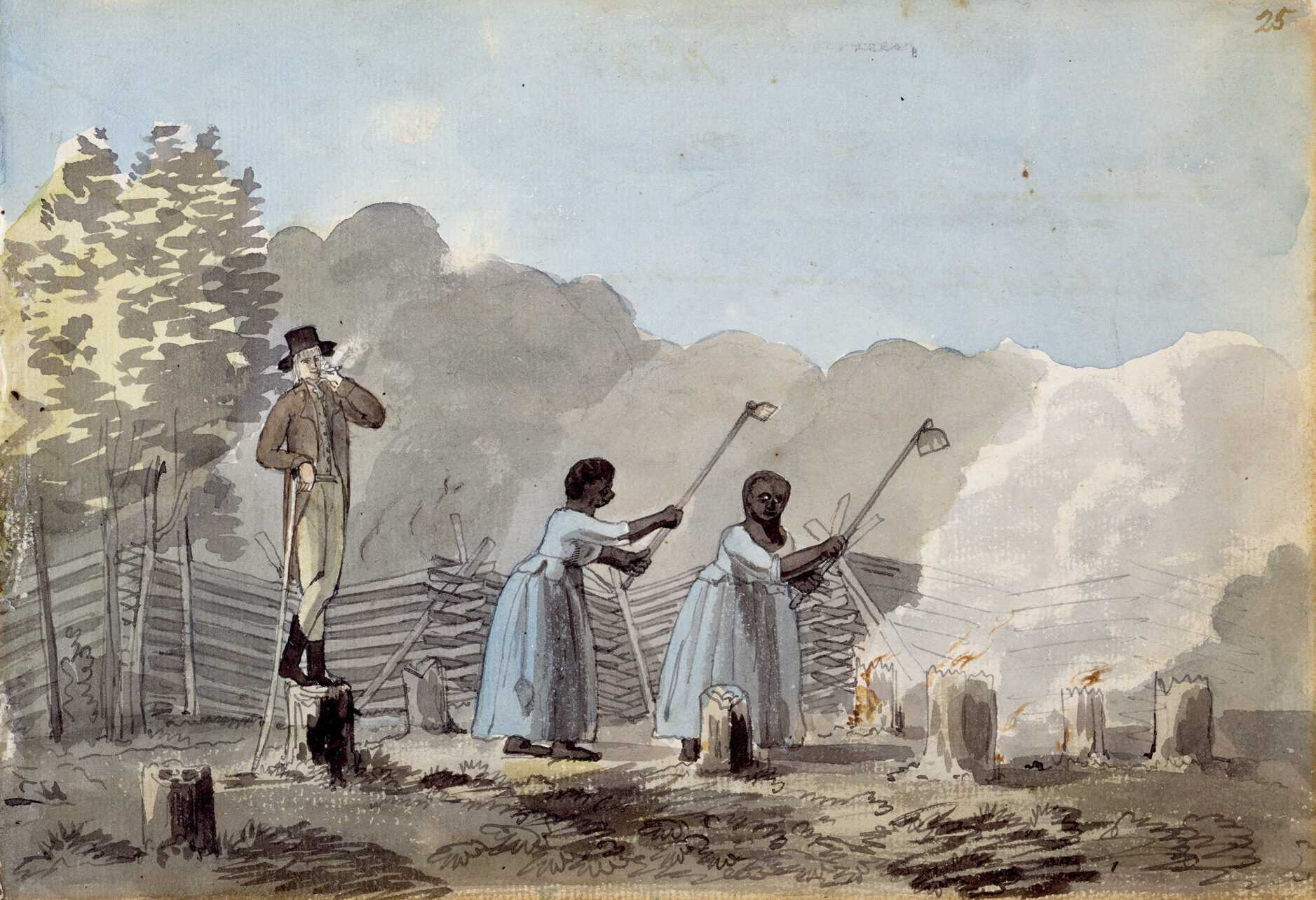Chapter 1
Enslaving Colonial North America
No African experience in the colonies was exactly the same. African people found themselves in different physical and social environments in the Chesapeake, the Lowcountry, Louisiana, and the Northern Colonies. Africans asserted new identities, created their own cultures, and resisted enslavement, while helping to build the physical, cultural, and intellectual foundations of colonial North America. By the end of the colonial period, race-based slavery was the law of the land and the basis of the economy. Africans were enslaved for life.
Malachy Postlethwayt was an economist and advocate of the slave trade. The author of The Universal Dictionary of Trade and Commerce in 1757, Postlethwayt was also employed by the government-sanctioned slave trading enterprise known as the Royal African Company. In 1745 Postlethwayt declared, “Are we not indebted to those valuable people, the Africans, for our Sugars, Tobaccoes, Rice, [and] Rum,” shedding light on the demand for and contributions of enslaved African people in the Western Atlantic World.

Whether children got by any Englishman upon a Negro woman should be slave or free, be it . . . enacted . . . children . . . shall be held bond or free . . . according to the condition of the mother.
Virginia Slave Code, 1662
Roots & Routes: Forced Migration to the Chesapeake
Africans in the Chesapeake region originated from the Bight of Biafra (modern Nigeria and Cameroon), 16% from the Gold Coast (modern Ghana), 15.7% from western Central Africa (modern Democratic Republic of the Congo, the Republic of Congo, and Angola), and 14.9% from Senegambia (modern Senegal and The Gambia). African men, women, and children from these regions were forced to work in the tobacco fields of the Chesapeake.
The Chesapeake Region
Senegambia | 3,900 |
Sierra Leone | 4,500 |
Windward Coast | 5,500 |
Gold Coast | 18,000 |
Bight of Benin | 4,000 |
Bight of Biafra | 58,000 |
Western Central Africa | 26,000 |
Madagascar | 2,900 |
The Chesapeake: Making Race
As the Chesapeake region began to take shape, ideas of race and class were less defined. Enslaved Africans, European indentured servants, and Native American groups such as the Pamunkey, Monacan, Piscataway, and Lenape worked alongside one another as they cultivated tobacco and other crops. They also intermarried, socialized, ran away, and rebelled together. Fearful of interracial alliances and eager for profits, enslavers saw slavery as a safer and cheaper option for labor. Africans were ultimately defined as enslaved for life and the concept of whiteness became more defined in the colonies.
Enslaved Women and Overseer in the Field
Landscape of Slavery
Newly Cleared Farmland in the Colonial Chesapeake
In the Chesapeake region, landholdings tended to be of modest size with interracial workforces of fewer than 10 people. Enslaved Africans, European indentured servants, and Native Americans worked together as they cleared land, built farms and plantations, and cultivated cash crops. Over the course of two generations, enslavers seeking fortunes in tobacco amassed vast landholdings by gradually developing an African workforce that was enslaved for life and whose labor generated great profits. Evidence of the great wealth and the spread of racial slavery in the region can still be seen in the grand colonial period houses that survive.
Indentured Servitude
Trade Card of Joseph Haynes
The colonial Chesapeake was peopled by a diverse workforce: African, Native American, and European; enslaved and servant. Some English colonists worked as indentured servants when they first came to the region. By law, indentured servants contractually agreed to work for a term of years without pay, after which they received their freedom, were provided tools of their trade, and could earn a wage. In contrast, enslaved African people were forcibly brought to the colonies, ultimately enslaved for life, and their enslaved status was inherited and passed down with each generation.
Work in the Chesapeake
Tobacco, the main crop of the Chesapeake, required year-round labor. A multiracial labor force of servants and enslaved workers planted, tended, and harvested the plants using hand tools including the hoe, scythe, and sickle. Those who tended the fields stooped over for hours to meet the demands of the back-breaking work. As the tobacco grew, workers swept through the fields picking off the flowers (topping) and pinching back leaves (suckering). This work left smears of sticky tar and nicotine on workers’ bodies. Children were tasked with squishing huge caterpillars to keep the insects from devouring the crop.
Life in the Chesapeake
Gambling Marbles
In the fields and outside of work, racial integration was common in early colonial Chesapeake society. Workers drank, danced, and gambled together and enjoyed rowdy encounters in local taverns. Interracial relationships between men and women often resulted in mixed-race children. Indentured servants and enslaved people intermingled and relied on each other for survival until new laws and customs redefined rights and status according to race.
Preparations for Sunday Evening
Escape from the Chesapeake
Runaway Ad in Colonial-era Newspaper
Descriptive runaway ads filled Chesapeake newspapers as enslaved people tried to escape servitude. They pursued freedom despite the consequences of being caught, which could range from a whipping to the amputation of a limb. Repeat offenders could be marked with a brand on the cheek, as fixed by law in 1642. By 1705 it was lawful for any white person to kill a runaway.
John Punch: Enslaved for Life
The case of John Punch was the first time race was recorded as a factor in determining freedom or enslavement. In 1640 John Punch, identified as a servant in Virginia, and two European indentured servants attempted to run away together. They were caught and ultimately brought to trial. The two indentured servants, named in the record as “Victor, a Dutchman, the other a Scotchman James Gregory,” received additional time added to their indenture agreement. In contrast, all chance of freedom disappeared for Punch as the court record declared “a negro named John Punch shall serve his said master or his assigns for the time of his natural Life here or elsewhere.”
A Voice from the Chesapeake: Anthony Johnson
Silhouette of Anthony Johnson
Anthony Johnson was brought to the colonies in 1621 as an enslaved African. At the time, a system of racial slavery had not yet been made law. Johnson and his wife, Mary, were able to purchase their freedom, and Johnson used his knowledge of tobacco farming to become a successful planter. He also defended his rights in colonial court, protecting ownership of their property, including enslaved people. The Johnsons sold and bequeathed their 250 acres in Virginia, moved to Maryland, and leased 300 acres of land. Upon Anthony’s death in 1670, Mary Johnson successfully renegotiated the land lease for another 99 years—a notable achievement considering her status as a Black woman.
By 1672 a Virginia court posthumously declared that Anthony Johnson was a negro and by consequence, an alien, and therefore the original land he had owned and bequeathed to his son in Virginia should revert to the English crown. Johnson’s story illustrates the fluidity of early colonial society and the shift to status being defined more rigidly by race.
Across the Color Line
Virginian Luxuries
Intimate relationships in the Chesapeake crossed color lines. Some were consensual; others were not. Enslaved women were subjected to the sexual demands of white enslavers. After 1662, any children from these encounters were legally classified as enslaved based on the status of the mother. Consensual interracial relationships were made illegal in 1705. Virginia required that "whatsoever English, or other white man or woman, being free, shall intermarry with a negro or mulatto [person] . . . bond or free, shall . . . be committed to prison."
One hundred and four Englishmen arrive in Virginia | 1607 |
First commercial crop of tobacco is shipped to England | 1617 |
First people of African descent brought to Point Comfort in Virginia | 1619 |
Children are born slave or free depending on the status of their mother | 1662 |
Law enforces slavery for life | 1664 |
No Black person (whether slave or free) may carry weapons, travel without a pass, or lift a hand against a white person | 1680 |
Free Black persons and white persons married to Black persons are banished from the colony | 1691 |
“All negro, mulatto, and Indian slaves are considered real estate” | 1705 |
It is legal to kill an unruly slave | 1705 |
Virginia abolishes voting rights for free Black people and Indians | 1715 |
